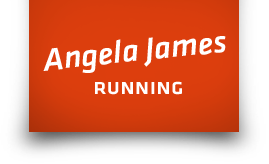Your body can teach you everything you need to know to walk or run better and find more fulfilment in your walking and running routines. Listening to our bodies is key to the enjoyment of not just being able to move freely when walking or running, but also moving through life. I am sure we all know people (including ourselves) who have suffered some trauma to their bodies, either from sports injuries, accidents, illness or maybe poor life style choices. Even the smallest little nick to the finger or, stubbing of the big toe, can be very disruptive in our daily lives.
Our bodies are constantly communicating with us letting us know if we are thirsty, exhausted, hungry, achey, burned out, or full of boundless energy. Our bodies also store other kinds of energy, like stress, pain, sadness, joy and various emotions. If we pay close attention, we can learn to read and eventually interpret those messages and signals as well.
In order to affect any changes we need to cultivate a strong, mind-body connection which is known as ‘Body Sensing’. The Form Focuses in ChiWalking and ChiRunning provide a great way to consciously practice the art of listening to our bodies. We want to learn to be mindful of what our body is telling us and then make changes that truly respond to the body’s call. The first step in Body Sensing is to learn to simply listen to your body.
Don‘t make any judgments on what you observe, or think about changing anything yet, just gather information and make mental notes. You‘re just learning to listen and observe yourself. I use this exercise that Danny and Katherine Dryer taught me to do while walking. It is called the ‘Body Sweep’. This is only the first step and just an exercise in learning how to observe your body. It’s not necessary to make adjustments, yet.
The next time you go out for a walk, begin with your focus at the top of your head and slowly scan yourself from head to toe, observing, only observing, any sensations that you meet along the way. Move from area to area, making mental notes of what you find along the way. Go from your head to your neck, then shoulders, arms, chest, abdomen, lower back, pelvis, hips, upper legs, knees, lower legs, ankles, and finally feet and toes.
As you go, ask yourself these questions: Do I feel tension here? Am I relaxed here? Am I standing tall or hunching at the shoulders? Am I picking up my feet? Heavy, light, soft, open - just watch and observe and see which descriptions come to mind. The more you watch, the more you‘ll see. All of this observation will eventually give you a great database from which to respond with the correct action.
After you have completed your scan, next take a look at the place in your walking that gives you the most problems. Is there a part of your body where you consistently feel some discomfort? Let‘s say there is. The first thing to do is to identify exactly what body part and, if possible, characterize the discomfort. Is it your foot, your knee, your hip? Does it ache, or is it sharp? When does it start and how long after your walk does it feel better? Can you manipulate the area to recreate the sensation? If you can, then try to move that particular area in a way that doesn‘t cause more discomfort. Is there an adjustment in your walking form that will help the sensation to disappear? Experiment with it. If you try, you might discover how to become your own best doctor.
You can never know your body too well. It is a great and wonderfully mysterious thing and by making the effort to sense what it‘s telling you, you can use it as your guide to learning how to move through your life in a healthy and vibrant way. Your body has a lot to say and the more you listen to it now, the less it will scream later through injury, illness or dysfunction. If something is going on with your body, you owe it to yourself to figure out what you are doing wrong and make the necessary adjustments.
You can start by simply learning how to sense the effects that daily life has on your body and whether or not what you‘re doing is healthy or unhealthy. Once you have accomplished this, you will have a good sense of the changes that need to be made. It is an on going practice, and the more you practice, the more skilled you will get at knowing your body both inside and out!


